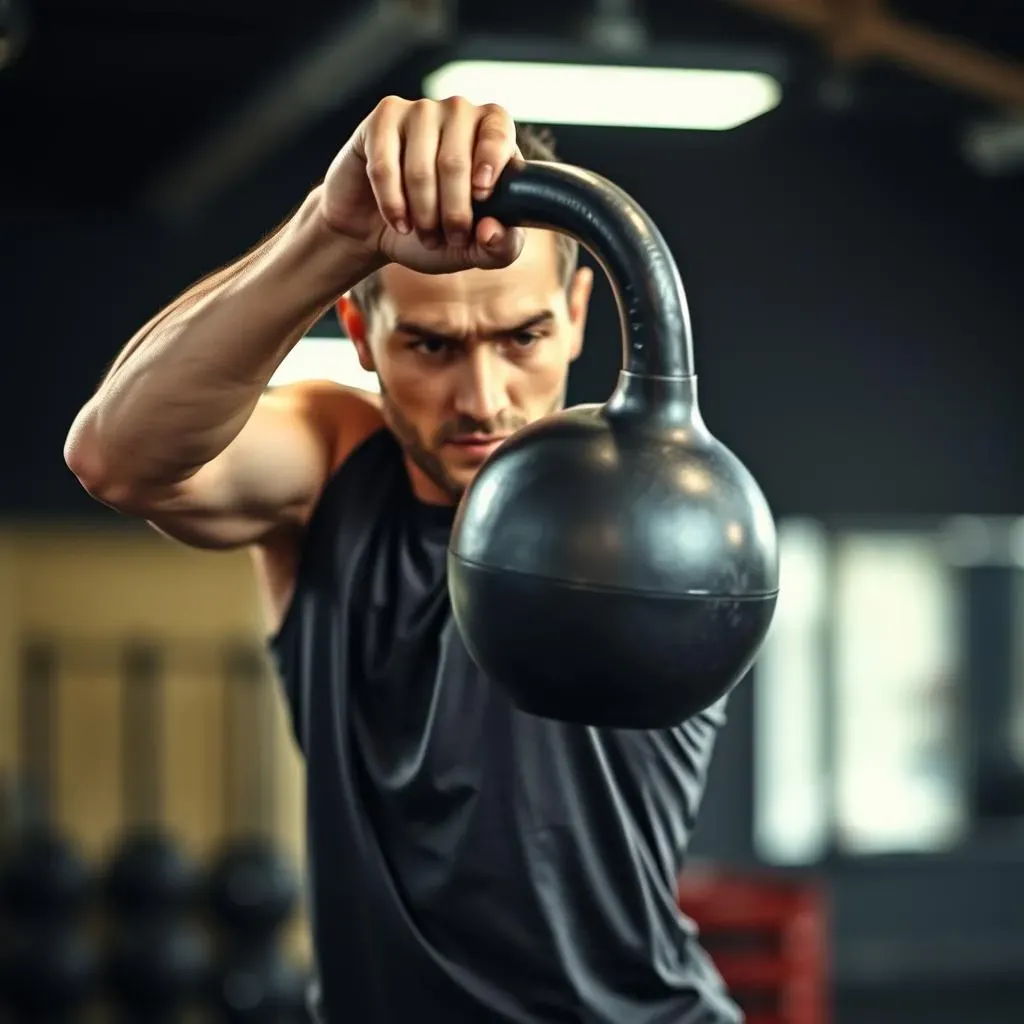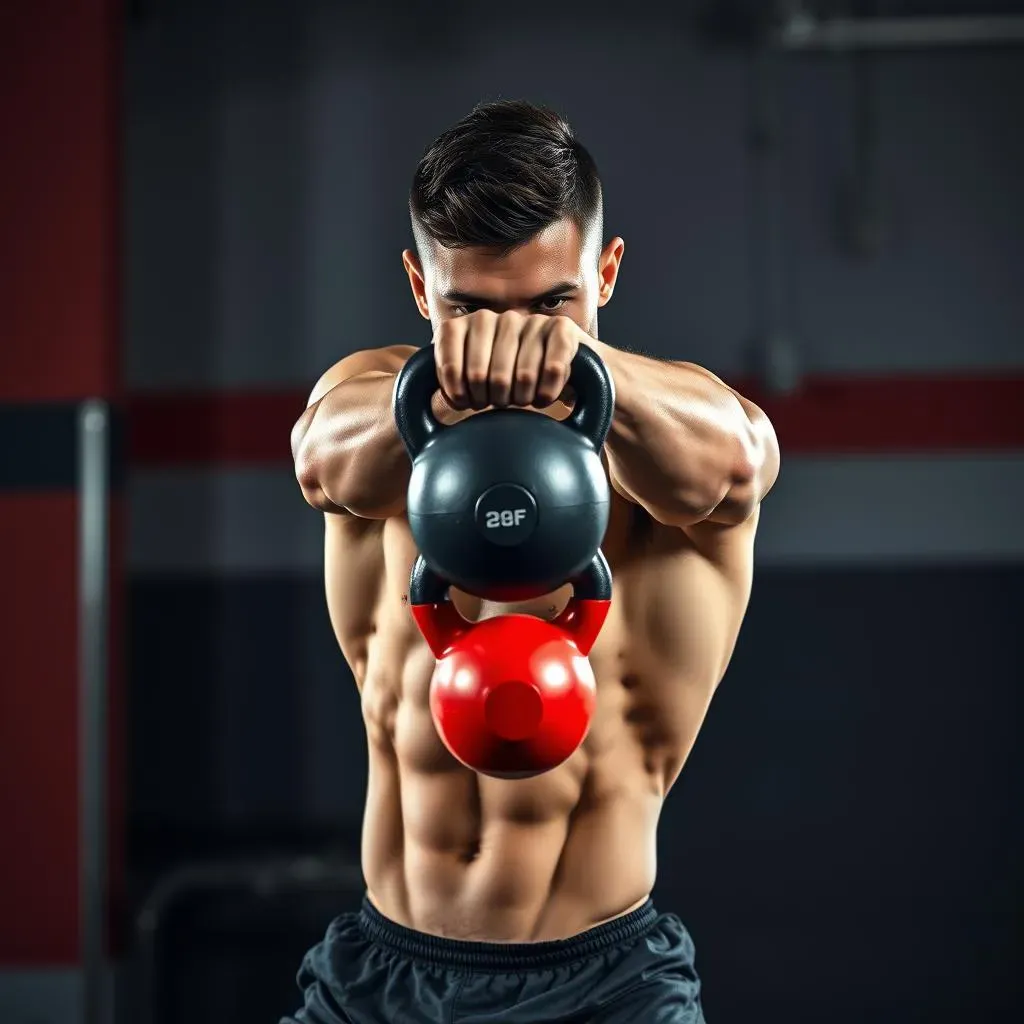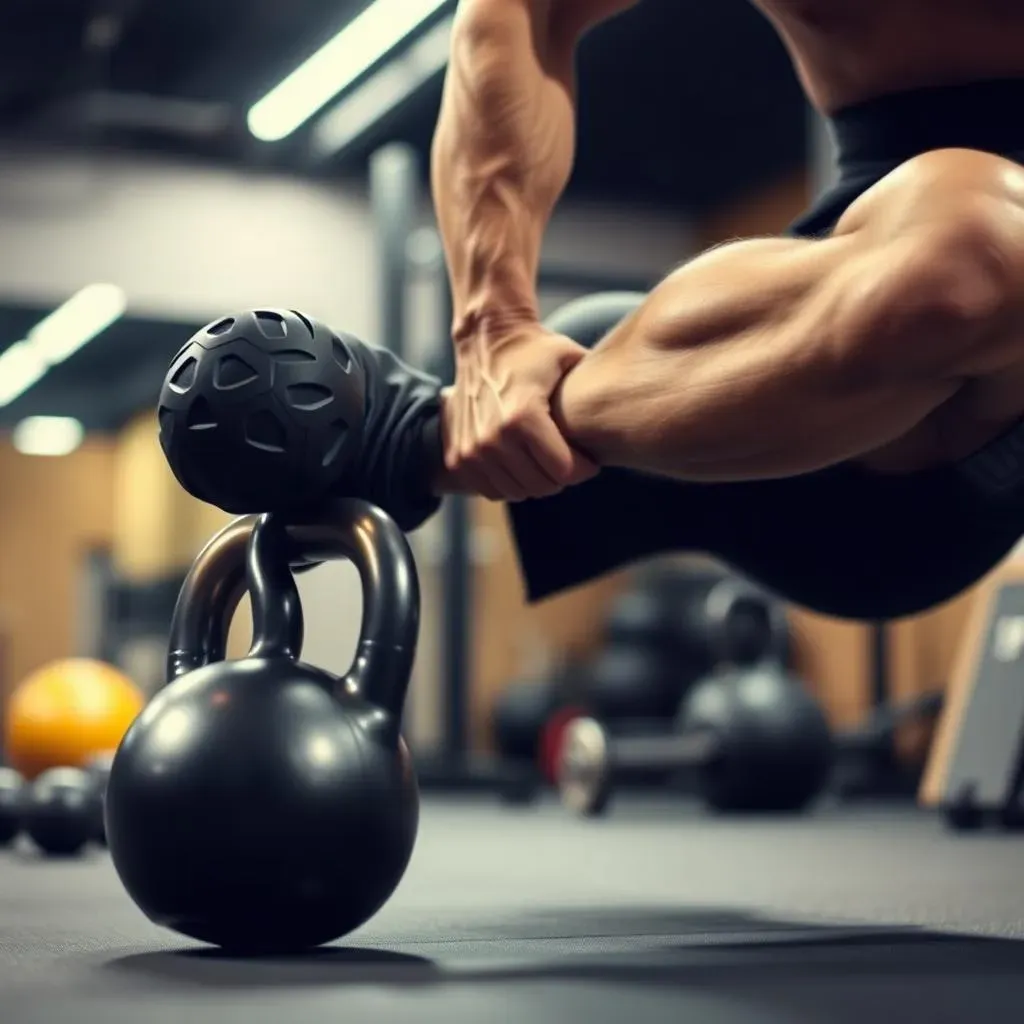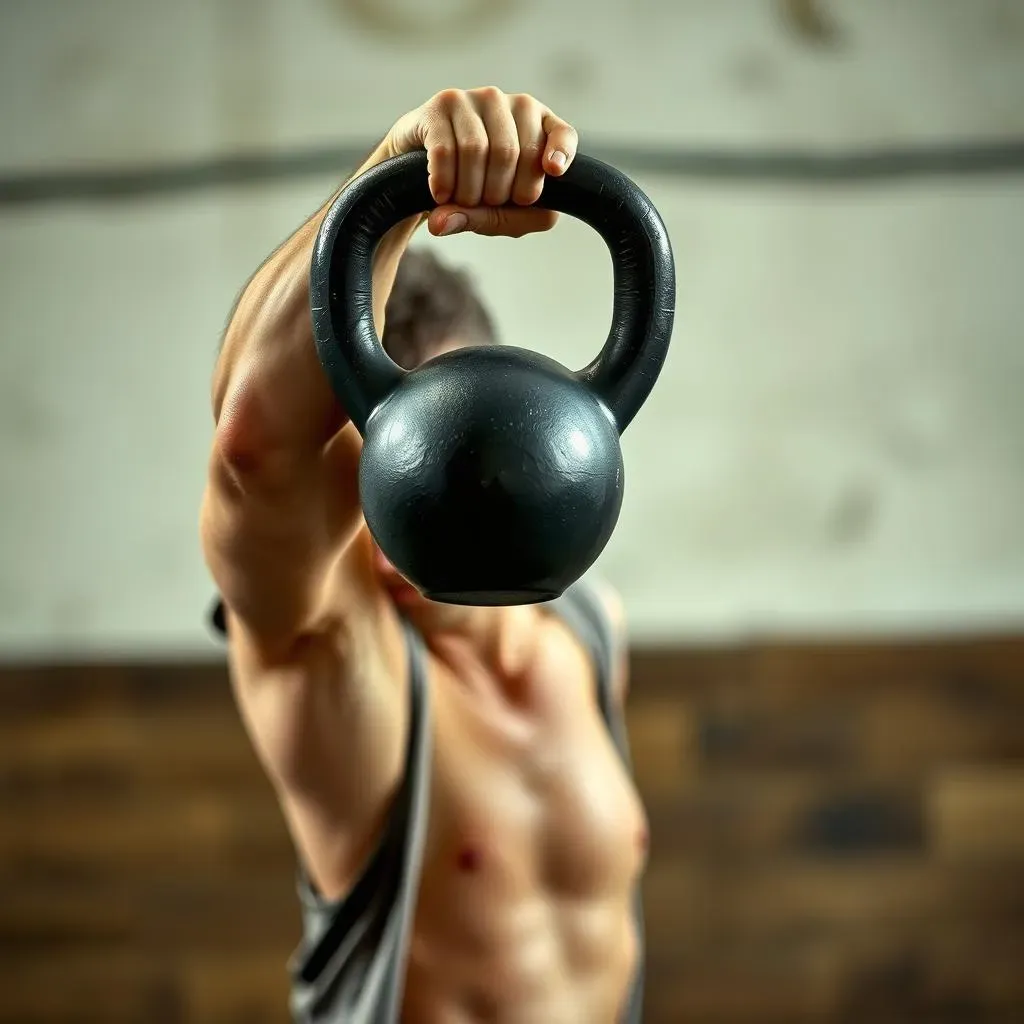Table of Contents
Ready to torch those quads, glutes, and hamstrings? A kettlebell leg workout might be just what you need. Kettlebells aren't just trendy gym toys; they're powerhouses for building lower body strength, explosive power, and functional fitness. Whether you're an athlete looking to improve your performance or just want to sculpt a more defined lower body, kettlebells offer a unique challenge. They can boost your strength and cardio, amp up your power, improve functional fitness, challenge your core, and even support back health. This article dives deep into the world of kettlebell leg workouts, giving you the tools and knowledge to build a routine that works for you. We'll break down the essential kettlebell training basics, walk you through 12 of the most effective kettlebell exercises for your legs, and provide sample workout routines to get you started. Plus, we'll share tips and considerations to maximize your results and minimize your risk of injury. So, grab your kettlebell, and let's get to work!
Kettlebell Training Basics: Your Foundation for Leg Day

Kettlebell Training Basics: Your Foundation for Leg Day
Why Kettlebells for Legs?
So, you're thinking about using kettlebells for your leg day? Awesome choice! Unlike dumbbells or barbells, kettlebells shift the weight away from your center of gravity. This forces your body to work harder to stabilize and control the movement, especially during leg exercises. Think about it: a squat with a kettlebell requires way more core engagement than a standard barbell squat. It's not just about lifting the weight; it's about controlling it, which translates to better balance, coordination, and overall strength.
Plus, kettlebells are incredibly versatile. You can use them for a wide range of exercises, from basic squats and deadlifts to more complex movements like swings and Turkish get-ups. This variety keeps your workouts interesting and challenges your muscles in different ways, leading to better results. And let's be real, who wants to do the same boring leg workout week after week? Kettlebells add a fun and dynamic element to your training.
Key Considerations Before You Start
Before you jump into a full-blown kettlebell leg workout, it's crucial to nail down some basics. First, make sure you have the right size kettlebell. Start with a weight that allows you to perform the exercises with good form. For women, a good starting point is typically between 8kg (18lbs) and 12kg (26lbs), while men often start with 16kg (35lbs) or 20kg (44lbs). Don't be a hero and go too heavy right away; it's better to master the technique with a lighter weight and gradually increase the load as you get stronger.
Also, pay close attention to your form. Kettlebell exercises can be a bit tricky at first, so it's essential to learn the proper technique to avoid injuries. Watch videos, read articles, and if possible, work with a qualified trainer who can provide personalized guidance. Focus on maintaining a neutral spine, engaging your core, and controlling the movement throughout the entire exercise. Remember, quality over quantity!
Consideration | Description |
|---|---|
Starting Weight | Women: 8-12kg (18-26lbs), Men: 16-20kg (35-44lbs) |
Proper Form | Neutral spine, engaged core, controlled movements |
Learning Resources | Videos, articles, qualified trainers |
12 Killer Kettlebell Exercises for a Total Leg Workout

12 Killer Kettlebell Exercises for a Total Leg Workout
Kettlebell Swings: The King of Posterior Chain
Alright, let's kick things off with the undisputed king of kettlebell exercises: the swing. This isn't just about flailing your arms; it's a full-body movement that seriously targets your glutes and hamstrings. Think of it as a dynamic deadlift – you're hinging at the hips, not squatting, to propel the kettlebell forward. The power comes from your hips, not your arms! A properly executed swing should feel like a glute workout disguised as cardio.
The kettlebell swing is a foundational movement that teaches you how to generate power from your hips, which translates to improved performance in other exercises and activities. It also helps improve your posture, strengthen your core, and increase your cardiovascular fitness. Plus, it's just plain fun! There's something incredibly satisfying about swinging a heavy kettlebell and feeling the power surge through your body.
Goblet Squats: Your New Best Friend
Next up, we have the goblet squat. This is a fantastic variation for beginners because the kettlebell acts as a counterbalance, helping you maintain proper form and depth. Hold the kettlebell close to your chest, like you're cradling a baby (a heavy, iron baby!), and squat down as low as you can while keeping your back straight and your chest up. The goblet squat forces you to engage your core and maintain an upright posture, which makes it a great exercise for improving your squat technique.
This squat variation is especially effective for targeting your quads and glutes. The kettlebell's position encourages you to sit back into the squat, which activates your glutes more effectively. It's also a great way to improve your ankle mobility, which is essential for performing deep squats without compromising your form. Don't underestimate the power of the goblet squat; it's a simple but highly effective exercise for building lower body strength and improving your overall squat mechanics.
Exercise | Target Muscles | Benefits |
|---|---|---|
Kettlebell Swing | Glutes, Hamstrings, Core | Explosive power, improved posture, cardio |
Goblet Squat | Quads, Glutes, Core | Improved squat form, ankle mobility |
Bulgarian Split Squats: Embrace the Unilateral Challenge
Now, let's get into some unilateral work with the Bulgarian split squat. This exercise is a killer for building strength and stability in each leg individually. Place your back foot on a bench or box behind you, hold a kettlebell in one or both hands, and lower yourself down until your front thigh is parallel to the ground. This exercise challenges your balance and coordination, forcing your core and stabilizer muscles to work overtime.
Bulgarian split squats are excellent for addressing muscle imbalances and improving your overall athletic performance. By working one leg at a time, you can identify and correct any weaknesses or imbalances between your legs. This can help prevent injuries and improve your performance in activities that require single-leg strength and stability, such as running, jumping, and cutting. Plus, they're just plain tough, which makes them a great way to challenge yourself and push your limits.
Putting It All Together: Sample Kettlebell Leg Workout Routines

Putting It All Together: Sample Kettlebell Leg Workout Routines
Beginner Kettlebell Leg Day
so you've learned some exercises, but how do you actually put them together into a workout? Don't sweat it, I've got you covered. If you're just starting out, keep it simple. Focus on mastering the basic movements and gradually increasing the weight and intensity as you get stronger. A great beginner routine might look something like this:
- Goblet Squats: 3 sets of 10-12 reps
- Kettlebell Swings: 3 sets of 15-20 reps
- Bulgarian Split Squats: 3 sets of 8-10 reps per leg
- Kettlebell Walking Lunges: 3 sets of 10-12 reps per leg
Rest for 60-90 seconds between sets. Remember to focus on proper form and control throughout each exercise. Don't be afraid to start with a lighter weight and gradually increase it as you get stronger. The goal is to challenge yourself without compromising your technique.
Intermediate Kettlebell Leg Day
Ready to take things up a notch? Once you've mastered the basics, you can start incorporating more advanced exercises and techniques to challenge yourself further. This intermediate routine adds some complexity and intensity to your leg day:
- Racked Squats: 3 sets of 8-10 reps
- Sumo Deadlifts: 3 sets of 6-8 reps
- Single-Leg Deadlifts: 3 sets of 8-10 reps per leg
- Kettlebell Step-Ups: 3 sets of 10-12 reps per leg
- Kettlebell Swings: 3 sets of 20-25 reps
Again, rest for 60-90 seconds between sets. Consider incorporating techniques like drop sets or supersets to further increase the intensity. For example, you could superset Racked Squats with Kettlebell Swings, performing one exercise immediately after the other with no rest in between. This will not only challenge your muscles but also improve your cardiovascular fitness. Remember to listen to your body and adjust the workout as needed.
Workout Level | Focus | Example Exercises |
|---|---|---|
Beginner | Mastering basic movements | Goblet Squats, Swings, Lunges |
Intermediate | Increasing intensity and complexity | Racked Squats, Sumo Deadlifts, Step-Ups |
Maximize Your Kettlebell Leg Workout: Tips and Considerations

Maximize Your Kettlebell Leg Workout: Tips and Considerations
Progressive Overload: The Key to Gains
Alright, so you're crushing those kettlebell leg workouts, feeling stronger, and seeing results. But how do you keep the gains coming? The answer is progressive overload. This basically means gradually increasing the demands on your muscles over time. It could be as simple as adding a little more weight to your kettlebell, increasing the number of reps or sets, or even shortening your rest periods. The key is to consistently challenge your body in new ways to force it to adapt and grow stronger.
Don't get stuck in a rut doing the same workout with the same weight week after week. Your body is incredibly adaptable, and it will quickly become accustomed to the same stimulus. To keep seeing progress, you need to keep pushing yourself beyond your comfort zone. This doesn't mean you have to go all-out every single workout, but it does mean you should be consistently striving to improve in some way, shape, or form. Remember, small, consistent improvements add up to big results over time.
Listen to Your Body: Rest and Recovery are Crucial
Progressive overload is essential, but it's equally important to listen to your body and prioritize rest and recovery. Overtraining can lead to injuries, burnout, and stalled progress. Make sure you're getting enough sleep, eating a balanced diet, and taking rest days when you need them. Your muscles don't grow during your workouts; they grow during the recovery process. So, give your body the time it needs to repair and rebuild.
Pay attention to any signs of overtraining, such as persistent muscle soreness, fatigue, decreased performance, or mood changes. If you're experiencing any of these symptoms, it's time to scale back your training and focus on recovery. This might mean taking a few days off, reducing the intensity of your workouts, or incorporating more active recovery activities like stretching or foam rolling. Remember, consistency is key, but it's better to take a step back and recover than to push through the pain and risk a serious injury.
Tip | Description |
|---|---|
Adequate Sleep | Aim for 7-9 hours of quality sleep per night |
Balanced Diet | Consume enough protein, carbs, and healthy fats |
Rest Days | Take 1-2 rest days per week to allow your body to recover |
Vary Your Exercises: Keep Your Muscles Guessing
Finally, don't be afraid to vary your exercises and try new things. While it's important to master the basic movements, constantly doing the same exercises can lead to plateaus and boredom. Experiment with different kettlebell variations, angles, and rep ranges to challenge your muscles in new ways. You can also incorporate other exercises, such as bodyweight movements, resistance band exercises, or even barbell exercises, to create a well-rounded and effective leg workout.
Think about it like this: your muscles are like curious children. They get bored easily and need constant stimulation to stay engaged. By varying your exercises, you keep your muscles guessing and prevent them from adapting to the same stimulus. This not only leads to better results but also makes your workouts more enjoyable and sustainable. So, don't be afraid to get creative and have fun with your kettlebell leg workouts. The possibilities are endless!
Conclusion: Kettlebell Leg Workout - Your Path to Powerful Legs
Incorporating a kettlebell leg workout into your fitness routine can be a game-changer. From building raw strength to enhancing athletic performance and improving overall functional fitness, the benefits are undeniable. By mastering the fundamental exercises and progressively challenging yourself with new variations and routines, you'll unlock a new level of lower body power and resilience. Remember to prioritize proper form, listen to your body, and enjoy the process of building stronger, more capable legs. So, keep swinging, squatting, and lunging your way to a better you!